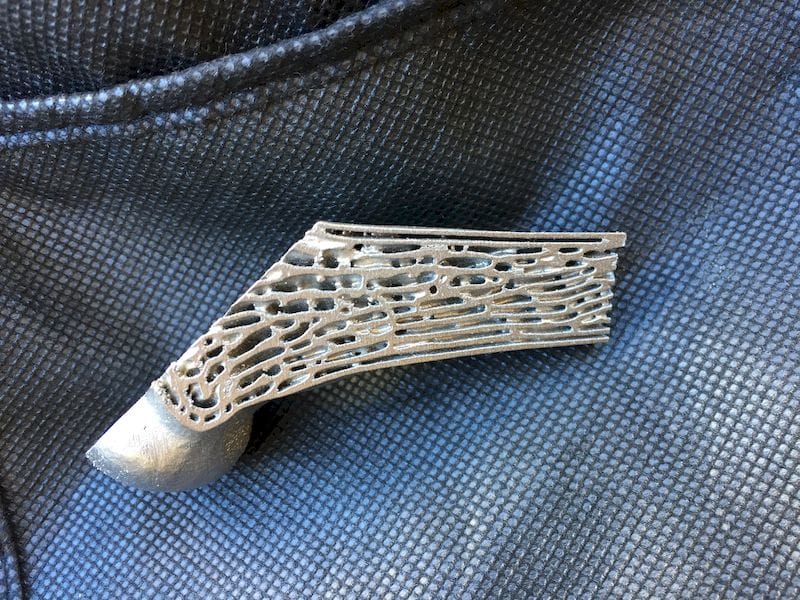
There’s a new generative 3D model solution available: ParaMatters.
With the greatly increased interest in generated 3D models recently, it’s no surprise there are more options for tools in this area. But the solutions vary considerably in part quality. One generative solution that seems to be quite powerful is a new service from California-based ParaMatters.
Founded by Michael Bogomolny, Phd, The one-year old ParaMatters provides a service that combines CAD and topology optimization, and with this you can design highly functional parts that can – and probably must – be 3D printed. That’s because the wild designs that result from the generative process are highly unlikely to be able to be made using conventional making processes.
One difference from ParaMatter’s CogniCAD solution and some alternatives is that the output 3D model is intended to be production ready, and entirely suitable for manufacturing, especially by additive manufacturing techniques. ParaMatters says that alternative solutions often require considerable manual effort post-generation, as the results may not be watertight, or even require manual geometry re-generation.
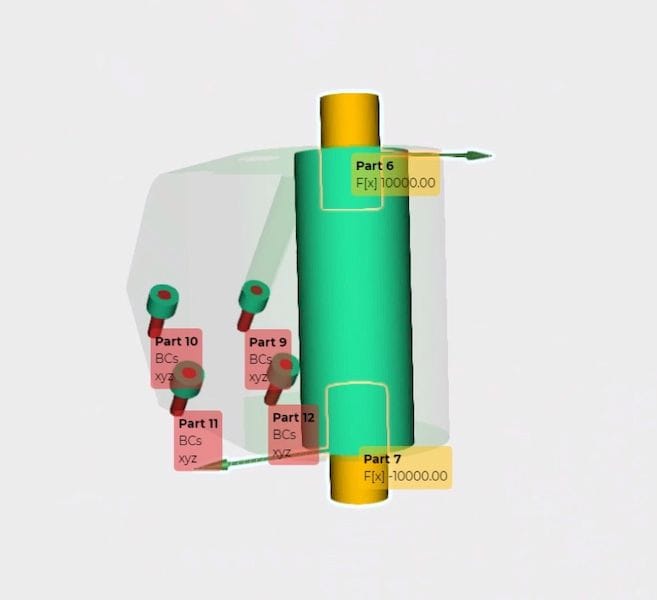
Here’s how it works: first you define your 3D models performance targets, including loads and objectives. Then after selecting materials, the system then computes the optimum 3D model to balance all of the requirements. It’s possible to import STEP files from your favorite CAD system to initialize the work.
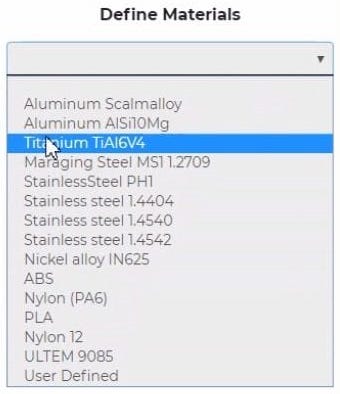
The results are highly unusual geometries for the parts, but they are both lightweight and high performance. The designs can be used for prototypes, production parts and even tooling applications.
There are two extremely interesting aspects to this solution.
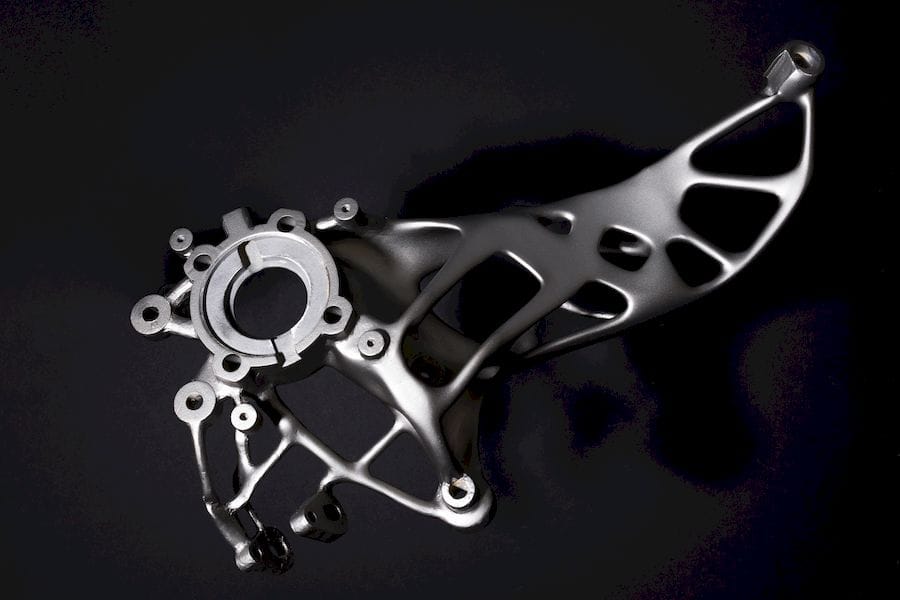
First, it is the scale of the models generated. ParaMatters provides three levels of resolution, which are, not surprisingly, High, Medium and Low. The Low and possibly Medium levels should be used for “draft” experiments. The Low level provides around 0.5M elements to the design, but what’s really interesting is the “High” level, where you will find up to 10M elements!
This level of detail should be sufficient to produce production-ready parts with very smooth surfaces and accurate details.
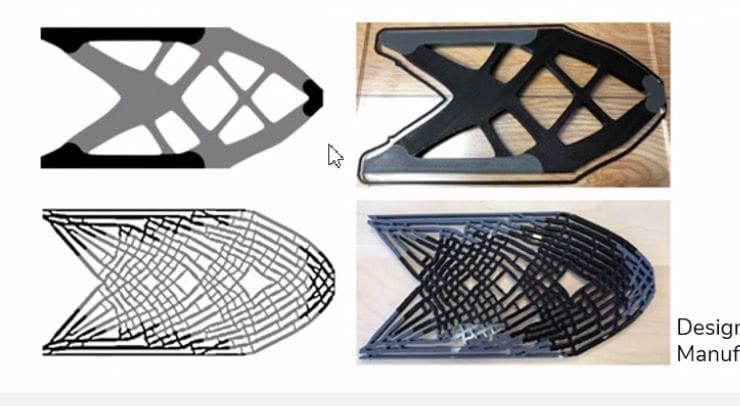
The second aspect of CogniCAD is that it is able to generate custom metamaterials. These are small mechanical structures whose movement, when engaged at higher levels, mimics other materials. In other words, you can “design” pseudo-materials with properties your actual materials might not have.

For example, this design involves a goal of pushing in one direction to cause a specific movement in another direction. The requirements were input into CogniCAD, and a model was then generated and 3D printed. This is literally requirements transformed into solution with a few button touches.
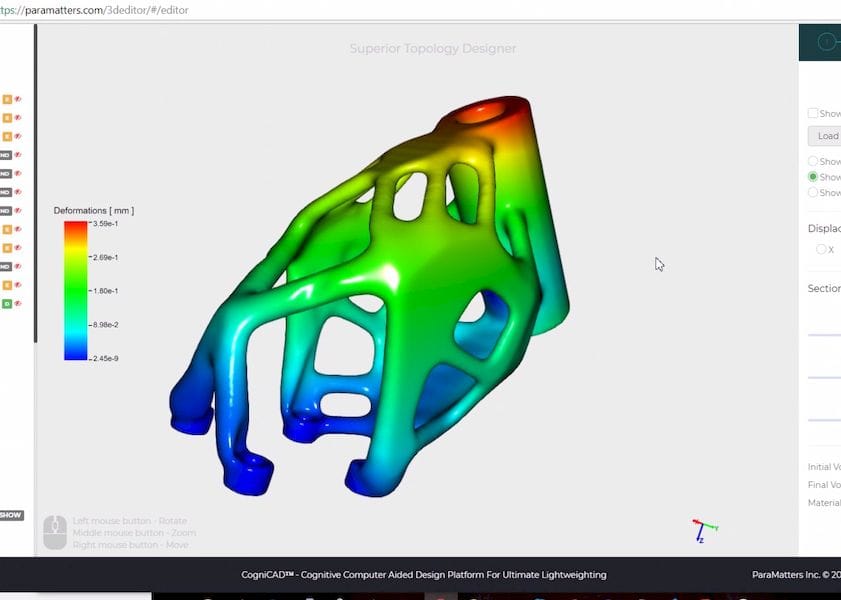
Some heavy compute power is required to perform the generation, and that’s why CogniCAD is implemented as a cloud service. Behind the scenes your generation requests will fire up huge numbers of processors to get the job done quickly. ParaMatters explained that in some complex cases, up to 128 processors may work for hours.
Because the system operates in the cloud, you cannot purchase the software – but neither do you require a subscription, as CogniCAD is priced per transaction, and it doesn’t seem to be particularly expensive, especially considering how quickly you get a very complex result. They provide two free computes, and then you must purchase “tokens” for use on each job. The number of tokens required for a given compute vary depending on the nature of the 3D model. Nevertheless, it may still be less expensive than paying a human 3D CAD expert to design the same part.
The service launched in January and although the 5-person startup hasn’t got a huge number of customers yet, I suspect they will grow significantly as people discover the power of this solution. We’re told their system is being evaluated by aerospace and automotive designers on both sides of the Atlantic.
At the moment CogniCAD handles static load cases such as forces and pressure, but they are working on a number of other dimensions, including acceleration, vibration, thermal loads and even multiple materials – which I have not seen in any other similar generative solution. Eventually ParaMatters is going to have a very powerful product that will handle many aspects of design.
It seems to me that multiple industries could easily make immediate use of CogniCAD’s ability to create impossible part designs that could save materials, reduce weight and provide high performance.
This is the type of solution the 3D printing industry needs: something that can assist manufacturers in creating the highly complex designs that actually leverage the full capabilities of 3D printing. It’s unreasonable to expect a company to simply “start 3D printing” without tools like this.
As a result, I would not be surprised if ParaMatters partners with some 3D printer companies in the future.
Via ParaMatters

